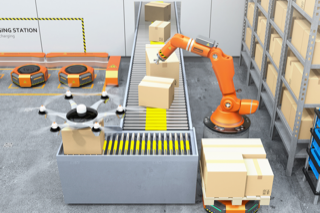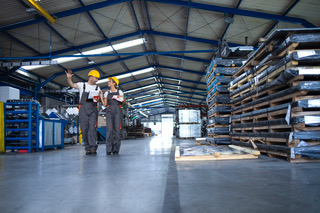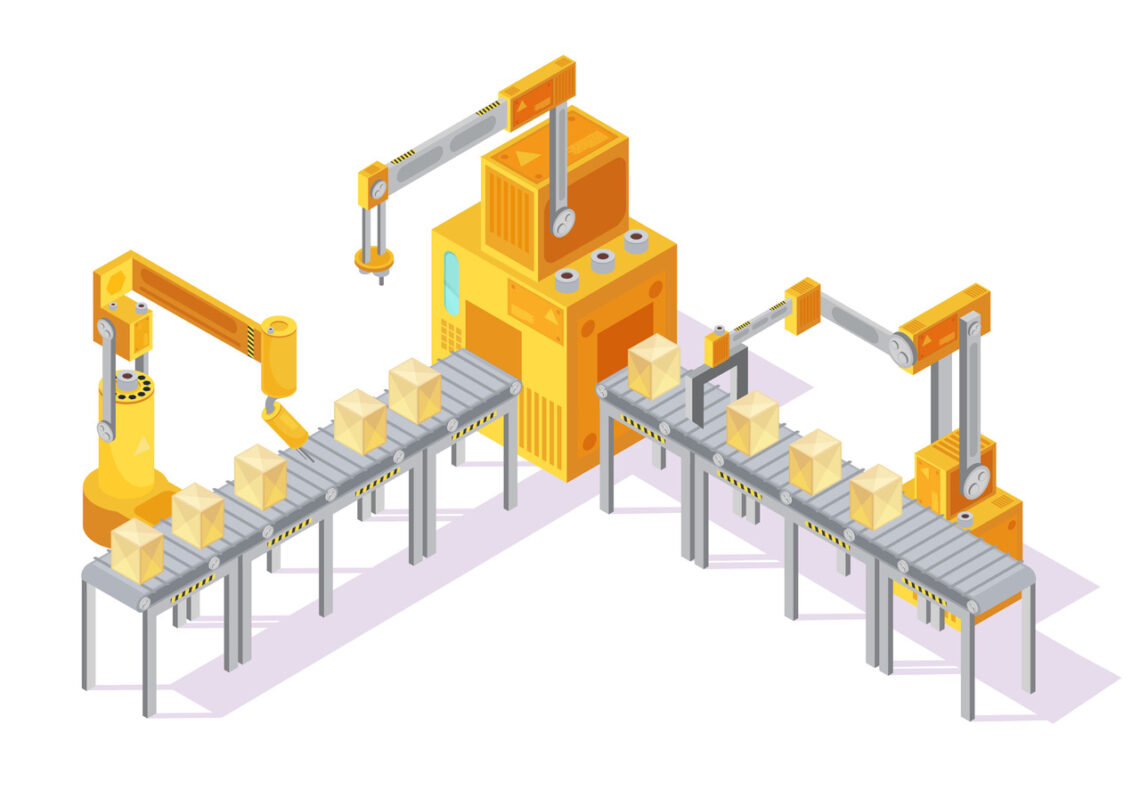From a tried-and-true approach to automation, the evolution of warehousing is remarkable. Manual processes, a focus on cost-cutting, and a lack of technological investment characterize the conventional model. While this model has served businesses well in the past, it’s considerably slow, labor-intensive, and more prone to human error. As the demands of commerce grew, so did the need for an agile, efficient, and adaptable warehouse solution – making it pivotal for CXOs to learn the potential impact of modern technologies on business operations and how they are shaping the future of commerce. Enter the rise of automation. With the help of technology, warehouses can streamline their operations, reduce the risk…
-
-
5 Types of Robots Transforming the Warehouse
You’d be amazed to know how much revenue the global warehouse automation market generated in 2021! As per Statista, the numbers stand at $7.91 billion, with an estimated $51 billion by 2030. The traction was mainly due to the boost in automation efforts to tackle the workforce shortage during the pandemic. Even with the pandemic subsiding, though, we can see that the market for Robotics for warehouse management is increasing rapidly. Welcome back to the 2nd blog in the series. This time, we’ll look at the different types of robots transforming the warehouse. Let’s start! Automated Guided Vehicles (AGVs) Automated Guided Vehicles are self-driving cars that navigate through the warehouse…
-
Robotics In Warehouse Management
As a new series of Rucha Yantra’s blogs begins, we will delve into Robotics in Warehouse Management. We hope you find it useful. Using robotics in warehouse management is transforming how companies store and retrieve goods. The main motives behind doing so are improving efficiency and reducing costs. Robotic technology offers a range of benefits, from reducing human labor to increasing accuracy and speed in order fulfillment. This article will focus on the benefits of adopting robotics in the warehouse and its historical evolution. History: The first use The use of robots in warehouses has been in practice since the 1960s. This is when Unimate, one of the first industrial…
-
Overcoming the challenges of automation in manufacturing
In the last three blogs, we have tried to understand automation in manufacturing and warehousing as well as its types and benefits. But, just as every coin has two sides, automation poses certain challenges. Let’s talk about those now. It is predicted that 20 million jobs will be displaced due to automation in manufacturing by 2030. This figure suggests that around 46% of jobs will be lost by 2030. Each year there is a staggering 10% increase in automation. Lately, automation in the manufacturing sector has picked up as it reduces labor costs, increases production speed, and improves accuracy. But specific challenges still pose a threat to its guilt-free and full-scale adoption. What are the challenges…
-
A Brief on Warehouse Automation
Continuing our series on automation, we have now brought up the topic of Warehouse Automation. Warehouse automation is a significant contributor to the growth and economy of a country. There are approximately 167,610 warehouses worldwide, with more than 80% lacking automation. The warehouse automation industry is going to boom under Industry 4.0. Robotics, logistics, and other warehouse automation technologies are anticipated to reach a global value of over $22.4 billion. The need for warehouse automation is immense as the majority of operating budgets for warehouse facilities are composed of roughly 65% labor costs! Warehouse automation also brings safety to the environment. The number of forklift-related accidents alone totals nearly 100,000…
-
Benefits of Manufacturing Automation
Hello readers! Now that we know what Manufacturing Automation – from the last blog – let us now highlight its benefits more clearly. COVID-19 has turned manufacturing automation from a cost-saving hack to a complete necessity. Automation will globally raise global productivity by 0.8% to 1.4% annually. This will also be followed by a net growth of 12 million jobs. As per McKinsey, almost 50% of the workforce can be easily automated. It’s no surprise automation in manufacturing has taken up more steam and resumed operations since the pandemic. In this article, we will introduce you to the benefits of manufacturing automation. It will help you understand if you should…
-
Manufacturing Automation – The New Frontier
Welcome back to a new series of blogs from Rucha Yantra. This time, we are talking about a new albeit already-established trend in manufacturing – Manufacturing Automation. A trend that Rucha Yantra is participating in and contributing to a lot as well. Let’s begin! Manufacturing automation refers to equipment and software that automates production systems or processes. Automation serves broadly two purposes – increasing production capacity or reducing costs, often both. Automation in manufacturing has come a long way – from using basic hydraulic and pneumatic systems to today’s modern robots. Most notably, industrial automation enhances and transforms those activities that were previously performed manually. One pioneer type of automation…






